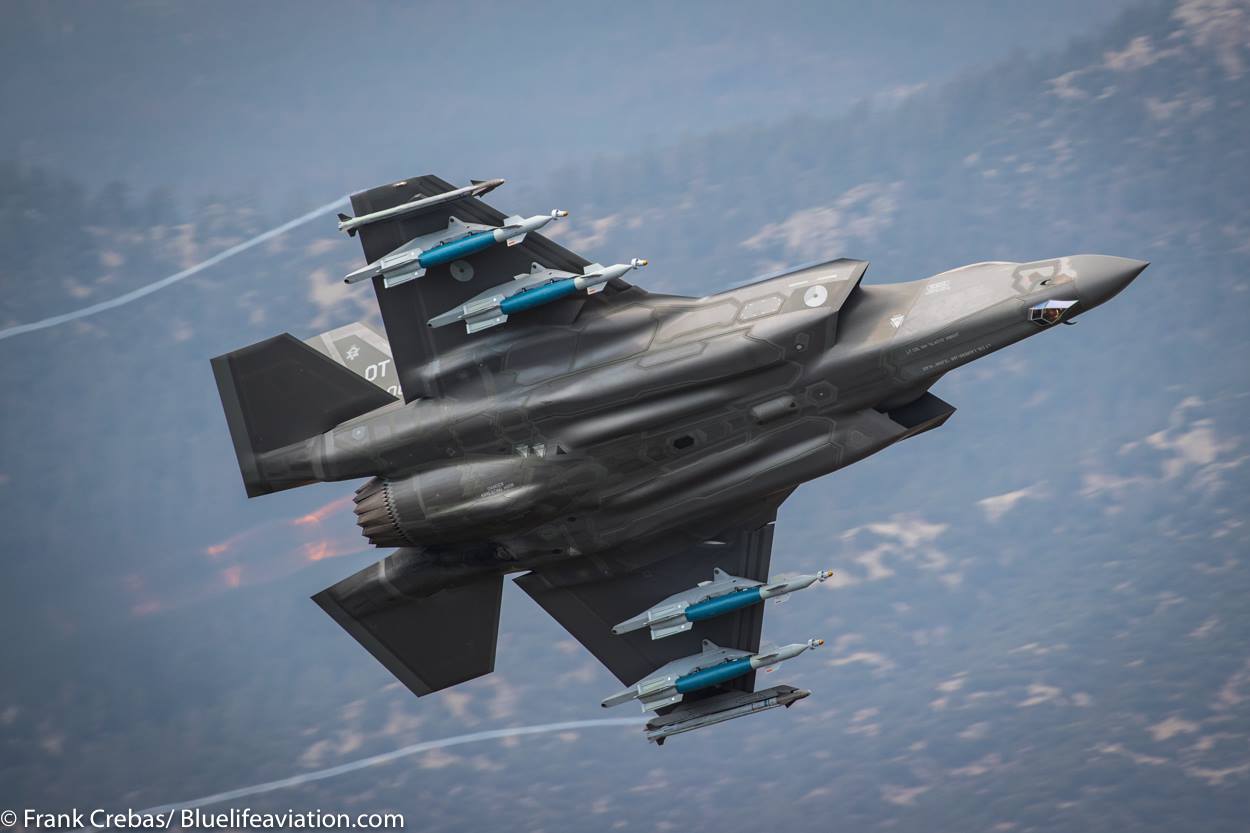
(April 30, 2019) — A US F-35A has carried out a pair of airstrikes against targets inside northern Iraq. They say the strikes were against ISIS, claiming to have hit a tunnel network and a weapons cache.
This marks the first time the F-35A has been used in combat. This was widely expected, with the jets deployed into the region on April 15, and officials hotly anticipating the first use of them.
The F-35 program has been wildly expensive, and the Pentagon are eager to start putting them into the field, where it can stop being an overpriced prototype and start being an overpriced vehicle in active combat.
Recent estimates are that the F-35 and its variants will cost conservatively $1 trillion over their lifetime for the Pentagon. Some estimates are even projecting this to go to $1.5 trillion, which seems reasonable given how many previous estimates have proven far below the reality of the matter.
US Air Force Conducts Airstrikes with F-35 for First Time Ever
Valerie Insinna / Defense News
WASHINGTON (April 30, 2019) — The US Air Force has finally flown its variant of the F-35 in combat, using two of the aircraft to take out an ISIS tunnel network and weapons cache in Iraq on April 30.
Tuesday’s airstrikes — the first US use of the F-35A conventional takeoff and landing model at war — follow the combat employment Israel Defense Forces’ F-35As in May 2018 and US Marine Corps’ F-35Bs in September 2018.
According to US Air Forces Central Command, the airstrike occurred at Wadi Ashai, in northeast Iraq. An April 24 news release from US Central Command stated that ISIS fighters “have been attempting to move munitions, equipment and personnel” to Wadi Ashai in order to “set conditions for their resurgence,” prompting a counter-offensive by Iraqi Security Forces and supported by Combined Joint Task Force – Operation Inherent Resolve.
“The F-35As conducted the airstrike using a Joint Direct Attack Munition to strike an entrenched Daesh tunnel network and weapons cache deep in the Hamrin Mountains, a location able to threaten friendly forces,” stated the AFCENT release, which used an alternative name for ISIS.
Further information about the event, including whether the strikes were successful, was not made available in the release.
An Air Force airstrike using the F-35A has been widely anticipated for weeks, after the service deployed the fighter jet to Al Dhafra Air Base in the United Arab Emirates on April 15. The service has not specified how many F-35s are now operating in the Middle East, but all jets are from the 388th Fighter Wing and the 419th Fighter Wing at Hill Air Force Base in Utah.
The F-35, made by Lockheed Martin, is the US military’s newest fighter jet. The program has been beset by cost and schedule overruns since its start about 20 years ago, and the Government Accountability Office estimates that the program will cost in excess of $1 trillion over its lifetime.
F-35 operators deployed to Al Dhafra praised the utility of the aircraft’s high-end sensor suite and computers in a combat environment.
“We have the ability to gather, fuse and pass so much information, that we make every friendly aircraft more survivable and lethal,” said Lt. Col. Yosef Morris, 4th Fighter Squadron commander and F-35A pilot. “That, combined with low-observable technology, allows us to really complement any combined force package and be ready to support AOR [area of responsibility] contingencies.”
Staff Sgt. Karl Tesch, 380th Expeditionary Aircraft Maintenance Squadron weapons technician, added that “this jet is smarter, a lot smarter, and so it can do more, and it helps you out more when loading munitions.”
Valerie Insinna is Defense News’ air warfare reporter. She previously worked the Navy/congressional beats for Defense Daily, which followed almost three years as a staff writer for National Defense Magazine. Prior to that, she worked as an editorial assistant for the Tokyo Shimbun’s Washington bureau.